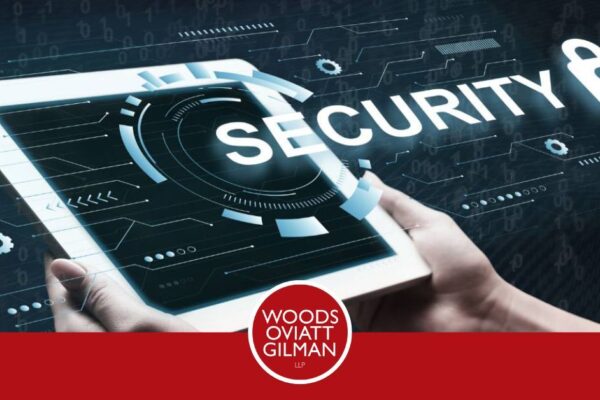8-7-23 Protecting Non-Literal Elements of Computer Programs Just Got Harder

SAS Institute, Inc. v. World Programming Limited, Federal Circuit, April 6, 2023 is an appeal from a ruling by the Eastern District of Texas dismissing, with prejudice, SAS's claim of nonliteral infringement by World Programming Limited ("WPL") of the "SAS System" after both parties moved for summary judgment. Nonliteral elements of a computer program are elements other than code-based elements, such as source code and object code, which are literal elements. Analogizing to a novel, the majority explained that the novel's written words would be literal elements, while the organization of chapters, characters and the plot would be the nonliteral elements. SAS attempts to clarify, at least at the Federal Circuit, the copyrightability of nonliteral elements of a computer program, which is not a common copyright topic. The existence of 11 high-profile amici, both for and against SAS, as well as the biting dissent, underscore the importance of this case.
Users of the SAS System input their user-written programs into the graphical user interface ("GUI") to address various analytics. Users of the SAS System write programming language in what is known as the "SAS Language," developed by SAS. An earlier version of the SAS System was in the public domain, but SAS has copyright registrations covering various aspects of the current SAS System over many years of development beyond the earlier version.
As noted by the dissent, the district court indicated copying by WPL was conceded and that "WPL's business was to 'clone' the SAS Software[,]" points conveniently left out by the majority. As the majority sees it, WPL simply created a competing system to the SAS System, which "also uses the SAS Language to allow users to run user-written programs" for various analytics.
The majority identified three issues put forth by SAS on appeal: (1) whether the district court's copyrightability holding was erroneous as a matter of law; (2) whether the district court abused its discretion in its use of a "special hearing" to determine copyrightability; and (3) whether the district court abused its discretion in rejecting SAS's expert report.
Computer programs are considered to be literary works. 17 U.S.C. §101 defines literary works as "…works, other than audio-visual works, expressed in words, numbers or other verbal or numerical symbols or indicia, regardless of the nature of the material objects, such as books, periodicals, manuscripts, phonorecords, film, tapes, disks, or cards, in which they are embodied."
As noted above, nonliteral elements of a computer program are elements other than code-based elements, such as source code and object code, which are literal elements. Examples of such nonliteral elements include program architecture, structure, sequence and organization, operational modules and user interfaces.
Carefully crafting how they would review the SAS program, the majority then discussed the House Report for the Copyright Act of 1976, though failing to address the amendment in 1980 to bolster the copyrightability of computer programs, and noted that the Act explicitly indicates that computer programs are literary works. Further, citing Gates Rubber Co. v. Bando Chem. Indus., Ltd. (10th Cir. 1993) with roots in the Supreme Court, the majority explained that "whether a particular component or element of a program is protected by a copyright depends on whether it qualifies as an expression of an idea, rather than the idea itself." Further, the Majority added that "[a]dditionally, other doctrines of copyright law detail what elements are not protectable, including scenes a faire elements, material in the public domain factual material, and elements under the merger doctrine[,]" citing Computer Assocs. Int'l, Inc. v. Altai, Inc. (2nd Cir. 1992) and Gates. The Majority then noted that courts use different approaches to "identify and analyze copyrightability for nonliteral elements of computer programs[,]" which lays the groundwork for the Majority to rubber stamp the district court's use of the abstraction-filtration-comparison test. The test parses the computer program into its constituent structural structural parts (abstraction), then sifts out all non-protectable material (filtration), then comparing what remains to the allegedly infringing program (comparison). The district court had recognized the 5th Circuit had adopted the test, citing Eng'g Dynamics, Inc. v. Structural Software, Inc. (5th Circuit, 1994). Although there are other approaches, the abstraction-filtration-comparison test was developed, as the dissent points out, for copyright infringement, comparing two or more computer programs for substantial similarity, not copyrightability. Indeed, the dissent pointed out that the focus should be on the copyrightability of the SAS Program, rather than infringement.
The order of the burden of proof, per the dissent, should be the copyright owner showing proper registration(s), which carry a presumption of copyrightability. This then shifts the burden of proof to the accused infringer to negate copyrightability. However, what actually happened in this case was that after SAS showed proper registrations of the works, WPL then put forth evidence of the existence of some unprotectable elements present in the SAS Program. SAS was then tasked by the district court with identifying and proving each nonliteral element in the SAS program to be independently copyrightable, effectively changing the burden of proof (and potentially the law).
In setting the copyrightability hearing, the district court required the parties to present evidence regarding the abstraction and filtration steps. The non-literal elements SAS claimed were copied included the SAS System input formats, output designs and naming and syntax (replaced later in the opinion by "keywords"). As one justification of unprotectability, the district court stated that many of the current SAS System procedures have names identical to the older version of the SAS System in the public domain. However, two works having the same name does not mean the bodies of the two works are the same. Although SAS's expert did comment on abstraction, the district court found SAS's expert failed to comment on filtration. However, that was not completely accurate, as SAS's expert filtered out the first two of his five levels of abstraction. The five levels included the main purpose of the program, the interface mechanism, the input formats, the output designs and the naming and syntax of individual procedures. WPL's expert used, and the court adopted, the abstraction layers in Gates Rubber, an 11th Circuit case; namely, the main purpose of the program, the program architecture, modules (chunks of code that perform limited tasks), algorithms and data structures, source code and object code. Curious that source code and object code are included, since they are literal copyright elements and SAS was only alleging infringement of non-literal elements. It is also curious that, after adopting the Gates Rubber abstraction layers, the court did not give SAS a chance to apply that to the SAS System. Perhaps it is because, in footnote five, the court found that "[w]ere the Court to adopt a different schema of abstraction, the outcome of the filtration step would not change[,]" though no explanation or examples were provided.
When the district court found that WPL's identification of the presence of some unprotectable elements and then waved away SAS's reply and their expert opinion, the court effectively made all nonliteral elements of the SAS System unprotectable, including, as pointed out by the dissent, the selection and arrangement of program elements SAS argued, when some unprotectable elements had been shown.
The majority's attempt at cobbling together a justification of the district court was to hold that the copyrightability hearing was "well-supported" by the Federal Rules of Civil Procedure and within the district court's discretion under 5th Circuit law. The majority also cited to special procedures used in patent law, such as "Markman hearings," used for construing claims of a patent. While that may be true in patent cases, this is copyright, which protects expression, whereas patent attempts to get protection for claims that attempt to come as close to an idea as patent law and prior art allow.
As with other areas of law that the Federal Circuit has upended (e.g., patentable subject matter), the Federal Circuit does it again with the SAS opinion. Due to the SAS opinion, it is submitted that copyrights in computer programs have suffered, as a practical matter, a reduction in protection for non-literal elements.


